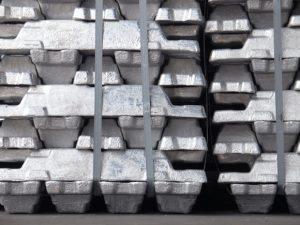Don’t trust stock levels to reflect metal demand
Analysis, specifically what’s termed fundamental analysis of metal supply and demand, and its impact in driving metal prices, is often a blunt tool.
That is particularly true since the financial crisis. Then, traders and hedge funds discovered the wheeze of buying spot and selling far forward (typically from 18-month to a few years) when the market is in a strong contango (when the higher forward price is sufficiently above spot to more than cover the cost of storage, insurance and finance, leaving a profit for the company).
Are rising Midwest premiums causing concern? See how service centers take advantage of that.
Metal stock levels don’t match price movements
As we all know, this has at times driven the creation of off-market inventory, sometimes termed shadow stocks, in non-exchange warehouses (because rents are cheaper).
For some metals, like zinc and copper, this has, at times, been hundreds of thousands of tons. For aluminum, it has been in the millions, dwarfing the exchange stocks on the LME and SHFE.
Trying to take these stocks into consideration is a nightmare. The LME’s increased reporting regime has helped. However, even so so-called shadow stocks are in their entirety at best an estimate.
So, when commentators say LME stocks have fallen as a justification supporting increased demand — or, vice versa, rising LME stocks are proof of weak demand — take such comments with a pinch of salt.
Copper, aluminum stocks
Over the last six months, we have seen copper prices surge. However, so too have stock levels on the LME and SHFE.
Over the last month, copper prices have fallen back as Beijing sought to pour cold water on the speculators’ party with threats of stockpile sales and a clampdown on “illegal activities.” Yet, while LME stock levels have risen as might be expected, SHFE stocks have fallen in equal measure. Total exchange stocks have remained fairly level.
Capital Economics, however, estimates unreported copper stocks have fallen sharply during the period. In short, that’s counter to what the price tells us should be happening.
It is a similar story with aluminum. Exchange stocks rose strongly even while the price increased this year. Stocks only eased back as the market went into a sideways range over the last month or so.
Off-exchange stocks, however, have fallen. The further out backwardation on the LME prevented any financial stocking activity and pulled off-market metal back into circulation to take advantage of rising physical delivery premiums over the LME price. That is particularly true in the U.S., where the Midwest premium has been running at or near $500 per metric ton since late Q1.
In short, exchange inventory levels are at best an indicator of activity. However, they are far from a reliable indicator of true demand.
The relationship between exchange and shadow stocks, the impact of a contango or backwardation between spot and forward prices, and the draw of physical delivery premiums which at times can move in opposite directions to headline exchange prices, all have a distorting effect on exchange inventory levels.
As such, all of the above makes metal stock levels an unreliable indicator of underlying demand.
Want MetalMiner directly in your inbox? Sign up for weekly updates now.




Leave a Reply